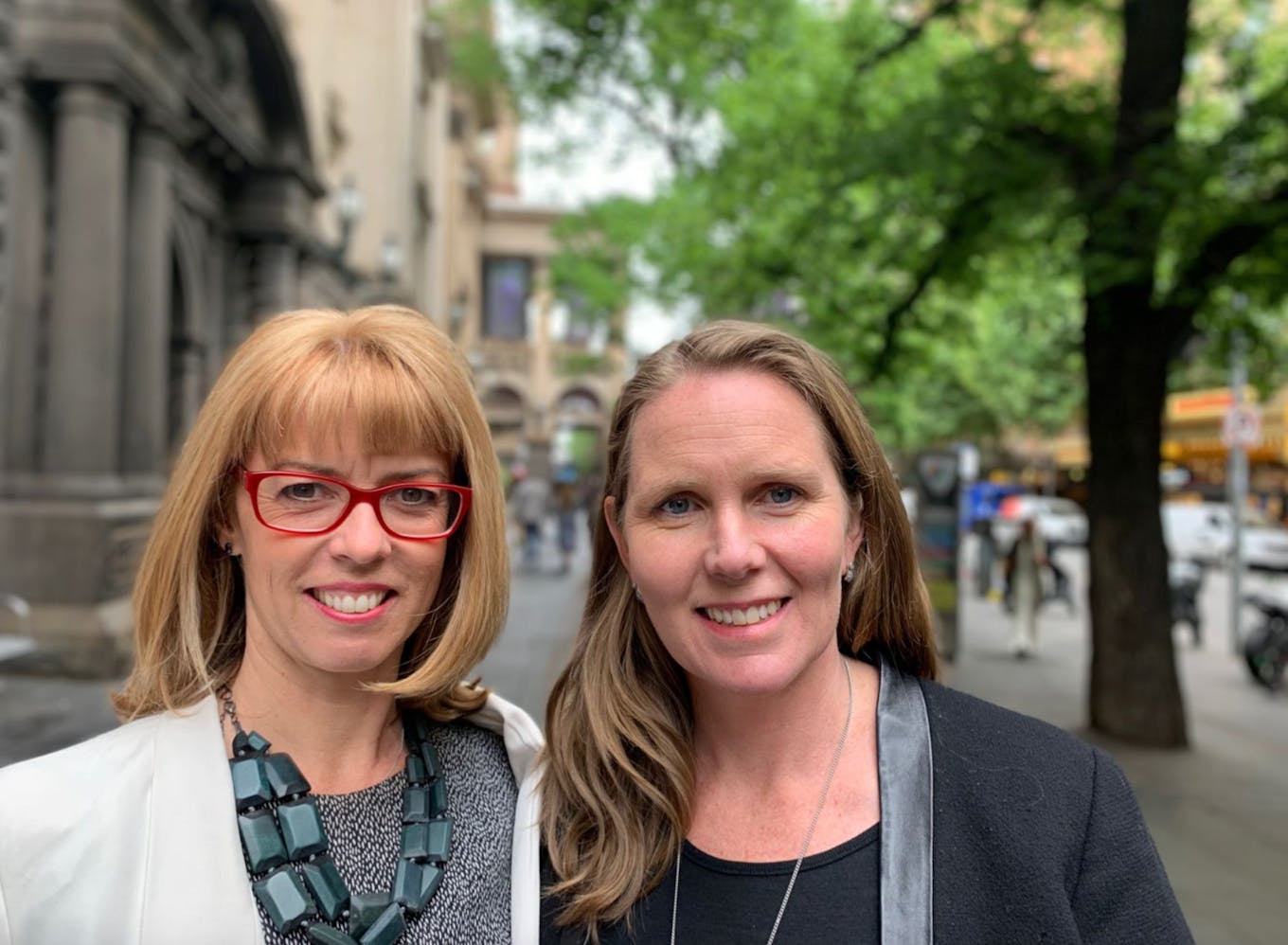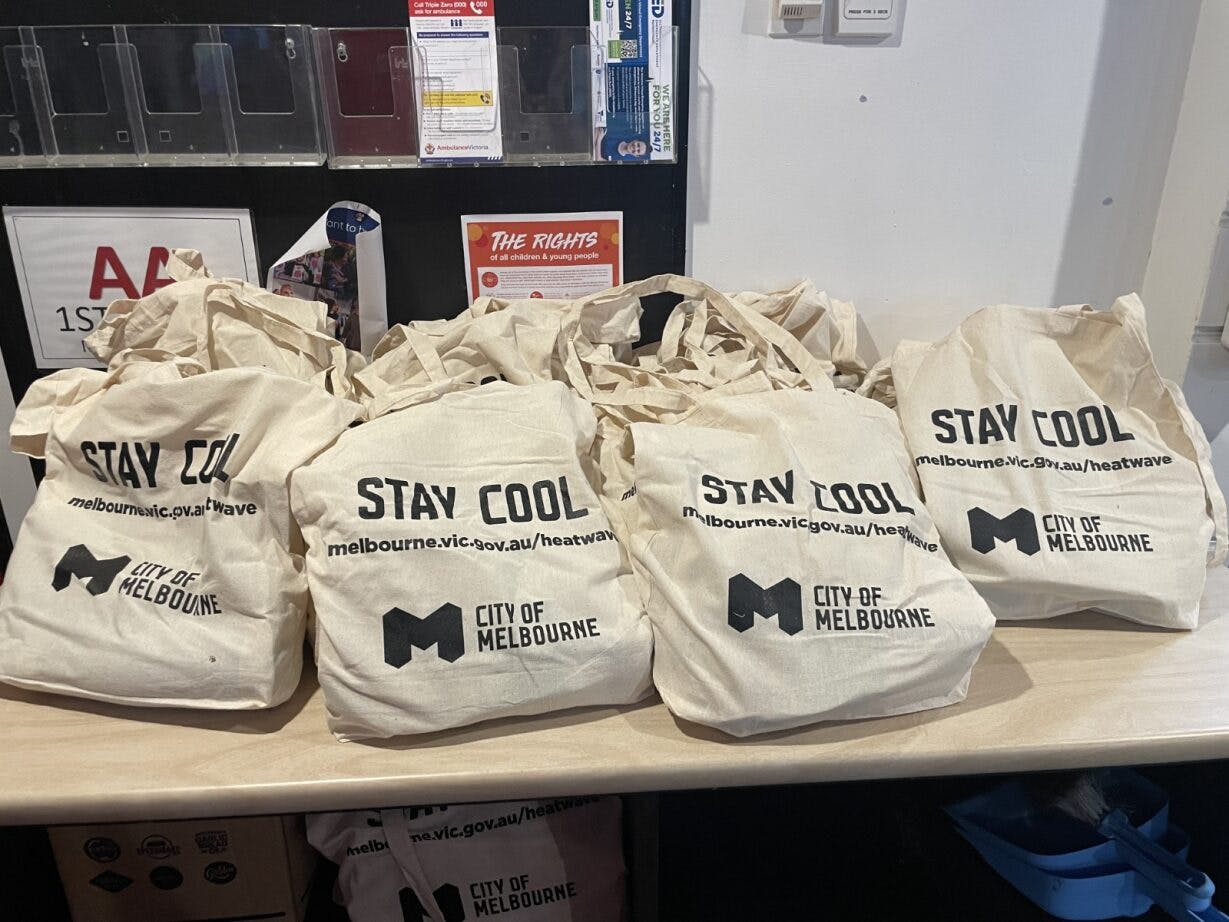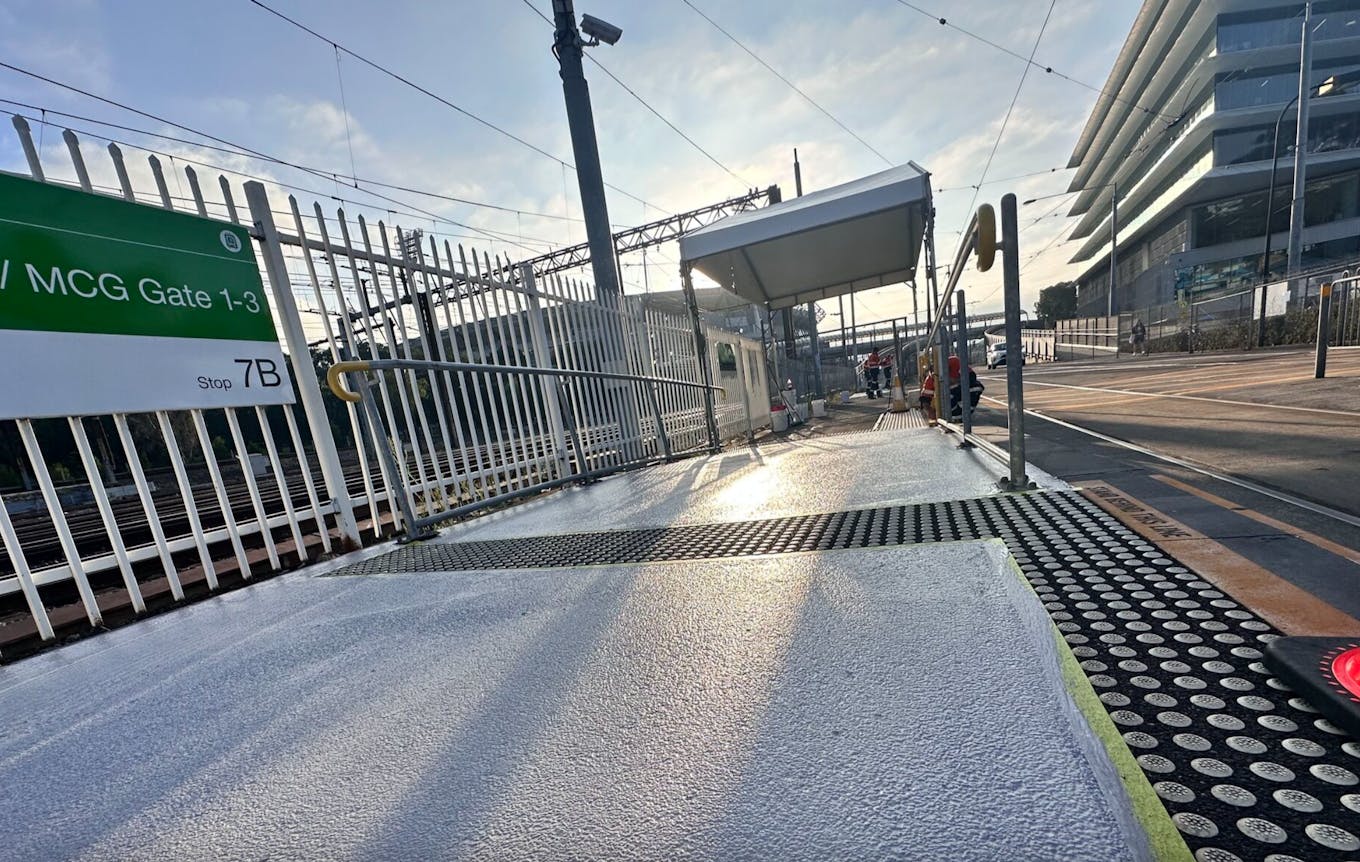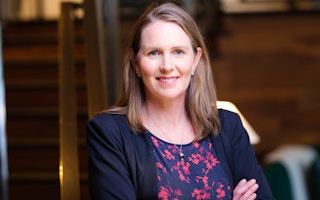Southeastern Australia is just emerging from one of its most intense autumn heatwaves in decades. Early last month, Melbourne and most of the state of Victoria sizzled in temperatures in the mid- to high-30 degrees Celsius.
To continue reading, subscribe to Eco‑Business.
There's something for everyone. We offer a range of subscription plans.
- Access our stories and receive our Insights Weekly newsletter with the free EB Member plan.
- Unlock unlimited access to our content and archive with EB Circle.
- Publish your content with EB Premium.
When I first spoke to Krista Milne in January to find out how the City of Melbourne had adjusted its heat response and communication strategies after appointing her and Tiffany Crawford to the roles of co-chief heat officers, Milne had shared that her team at the local council was getting prepared for intense hot weather in the months to come.
Since their dual appointment in October 2022, the city had not come under baking heat for a while – the past few summers were cool – but temperatures might soar and plans need to be made, she said.
“September 2023 was the warmest September on record globally and our local meteorological bureau then had also declared the arrival of El Niño, warning that it would have a major impact on the weather in Australia,” said Milne, who is also director of climate change and city resilience. “We expected a really dry and hot summer here in Melbourne [this year] but it has not materialised and that has taken a lot of people by surprise…That is likely to change and the weather should get hotter.”

Krista Milne (right) and Tiffany Crawford are co-chief heat officers at the city of Melbourne. Image: City of Melbourne
Milne joined Melbourne’s local council in 2010 as a manager of sustainability, and has decades of experience in climate action and environmental policy. With extreme heat becoming a key health concern, she joins the ranks of chief heat officers who have been appointed in various cities across the globe in recent years and spearheads projects and initiatives designed to help local residents adapt to major heat events.
Milne is particularly concerned about how heat stress affects different communities unequally, with some having inadequate access to housing and airconditioning. Other than rough sleepers, there are residents who still stay in old facilities not fit-for-living that might trap heat. Some are not sure where to get assistance.
Just last month, new research by the Australian Council of Social Service found that Australians experiencing financial and social disadvantage are unable to cool their homes.
Milne tells Eco-Business that beyond issuing advisories, cities need to be able to provide direct assistance to residents when extreme heat hits, as well as use technology and data platforms to provide easy-to-access information for citizens.
The role of “chief heat officer” was first established and formalised by the American think tank, the Adrienne Arsht-Rockefeller Foundation Resilience Center (Arsht-Rock). The aim was to provide a catalyst for cities to rethink their climate adaptation strategies. Across Asia Pacific, Dhaka, the capital city of Bangladesh, also recently appointed its first chief heat officer.
Elsewhere in Asia, persistently high temperatures are raising concerns about the impacts of heat stress. In Pahang, Malaysia, a hot spell has resulted in the death of a 22-year-old man who suffered from a heat stroke. In Singapore, experts are warning that there will be higher-than-usual temperatures in the months ahead.
In this interview, Milne, who is a winner of the Sustainabilty Leadership A-List 2023, shares her views on the most effective strategies to cool scorching cities, and why heat protection efforts must be inclusive.

Narm Ngargu, the City of Melbourne’s library and family services centre set up last November, offers free refreshments and “Cool Kits” for residents when the weather gets too hot. Image: City of Melbourne / X
How does having dedicated chief heat officers improve a city’s heat response plan?
For many years, the City of Melbourne has been addressing the issue of heat through our urban forest and health team, which recognises the potential health impacts of warm days and the value that forests can bring to the liveability of a city. But heat wasn’t a key driving factor in the way the local council makes decisions. The appointment of chief heat officers has raised the awareness and importance of heat in the decision-making process. This ranges from how we communicate with residents on a hot day to the measures that we ask businesses to put in place. It affects urban design – the way we design our public spaces or make sure that shading is provided. We make sure that stormwater is harvested to help grow our urban forests.
Our appointment as chief heat officers is formalised and supported by Arsht-Rock, and the City of Melbourne is now able to attract funding from the state government and from Emergency Management Victoria (the statutory authority in the Australian state) to test heat-related interventions through a programme known as Heat Lab. It is a theoretical lab where we are testing different ways to communicate and engage with the community around heat.
In Australia, many people tend to say: It’s always been hot. We’ll be fine and heat is just part and parcel of life, and we do not try to do too much to change our behaviour. What Heat Lab does is it raises awareness of the impact of heat and tests physical interventions such as the provision of shading, infrastructure redesign, and the application of pavement solutions. It advocates for stronger policies and programmes.
How has the communication strategy changed? When there is a heat event, how dynamic does the situation get?
We have changed how we target our communications. In the past, we would have put out a post on social media saying: It’s going to be hot today, take care. We still do that now, but we are also doing direct communication. We are running heat health and safety sessions with vulnerable communities. Attendees could be members in the communities who have underlying health conditions or those who do not have “cool places” to go to. Our teams hand out “cool kits” to communities. These could include water and wet towels. We are also able to geo-target our social media posts to areas where heat is more extreme. It is a team effort and the chief heat officers are more like spokespersons who try to raise awareness about the issue and play a stronger role in advocacy.

“Cool packs” are given out to Melbourne residents during a heat event. Image: City of Melbourne
Last summer was cool and we did not really have major heat-related events, but through our ground work, we have learnt that people do suffer when it is too hot. We have learnt of people sleeping in stairwells and under trees, and that clearly is not safe. So we are designing our programmes for the upcoming summers based on our understanding of how people experience heat.
We want to challenge the assumption that in Australia, everyone has air conditioning, and it is a viable, healthy society. That is not entirely true. I have seen how people need to go to a place that is safe. We are also now dealing with cost of living issues and energy poverty is a real challenge – people are choosing to turn off their air conditioners; they cannot afford to turn them on because of the high energy costs. There are members of the community who live in social housing, in quite close quarters within old facilities that the state government has announced that it is going to demolish and rebuild because they are not fit for purpose anymore. These structures trap and hold heat and are not appropriate places to live in.
What part of your role gives you the most satisfaction?
[Co-chief heat officer] Tiffany and I have been leading the climate change function at the City of Melbourne since 2019. Our latest appointment [as chief heat officers] which puts a laser-focused lens on heat has sharpened our understanding of the issue. To be honest, when the issue of appointing a chief heat heat officer was first raised, I questioned if we needed the role.
But at the same time, I know that more Australians die of heat than of any other natural disaster. Heat can cause dehydration and stress too. We see domestic violence going up during heat events. People face mental health issues and it affects their ability to function. So it is motivating to be involved and know that we are creating a positive impact.
Personally, I know I suffer and sometimes can’t sleep because of heat. I come to work and I am grumpy, so I understand how heat can affect every individual in the way they go about their life.
Tell us more about the network of “cool places” that the City of Melbourne has established. Are there other initiatives you are leading?
For the network, we’ve firstly identified all the facilities that the local council owns and operates. These include libraries and recreation centres. We’ve explored ways in which they can have dedicated rooms equipped with Wi-Fi and access to water that will be activated during a heat event. These rooms have longer opening hours and there are things for people to do too, including kid activities. We’ve provided grants to community organisations that have the appropriate facilities to encourage them to extend the opening hours of their facilities in a heat event. This ensures everyone in the municipality has a “cool place” they can go to within 300 metres of their accommodation.
Recently, we’ve also partnered with Melbourne-based climate start-up Climate Sense to develop a mapping platform. The map overlays historical weather and current weather data with social vulnerability metrics and urban forms, then identifies where are the most heat-intensive and heat-vulnerable areas. We now have a platform called Heat Sense that we make use of to track heat conditions and predict how these would affect the lived experiences of the community about seven days in advance, which is in advance of the advisories and data provided by the Bureau of Meteorology.
Personally, how has your understanding of heat and climate issues changed?
I grew up in the nation’s capital, Canberra, which is very bushy. I spent a lot of time on the south coast of New South Wales, which is beautiful and pristine. I think my interest in sustainability work came from spending a lot of time in a small hamlet where there wasn’t any commerce but which always felt really fragile from development.
The 2019-2020 Australian bushfire season, one of the most intense and catastrophic fire seasons on record in Australia, compromised where I grew up. The native bush in the area was decimated and many animals and birds were affected. After the event, the opinions of the populace on climate change and heat really shifted. I know people who spent a night sheltering on the beach surrounded by the bushfire and smoke. These are the people who later shifted their voting preferences and would vote pro-climate.
Then the Covid-19 pandemic hit and Melbourne was particularly impacted due to the lockdowns and the economic losses they created. I thought the concern surrounding heat, the bushfires and climate change would dissipate as a result but I think these issues are still in people’s minds. Certainly those who have lost their houses and what they own and are psychologically impacted have not forgotten.
We’ve also had wet periods and a lot of floods and there are people in Australia who are experiencing major floods three months apart. There is the recognition that climate disasters are becoming more prevalent and impactful.
What are you most frustrated with?
How to get our policies and legislation to catch up with what we know.
This includes rethinking urban design, building construction and retrofitting, as well as getting access to funding. Our built environment is now built to pretty poor standards and there are many apartments that do not have the basics. Planning policies are catching up but it is slow. I think our legislation surrounding heat and climate responsiveness is not pushing. It could push harder.
For example, the City of Melbourne has been working to move a planning scheme amendment and it is under consideration by the state government. This was put up about three years ago, and would require all buildings in the City of Melbourne to minimally achieve a “5 Star Green Star” rating (from the Green Building Council of Australia) and preferably a “6 Star” rating, as that is best practice. We are hoping it will get gazetted and supported by the state government in the next year to come. We would need to see a change in the National Construction Code to include updated energy efficiency requirements. Commercial building disclosure legislation also needs to be expanded so that more buildings report their energy use. Developments will then have to take into consideration the new regulations.

Ultraviolet light-repellent coating is applied to tram stops in Melbourne in a trial which aims to reduce temperatures for passengers on a hot and sunny day. The City of Melbourne is involved in the project to assess its impact. Image: Yarra Trams / LinkedIn
What has it been like interacting with chief heat officers from other cities?
It’s been hugely valuable. We’re not the longest standing ones so we have learnt from the initiatives of others, such as from the resilience hubs that Los Angeles and Miami have established. I’m still shocked to hear that someone died waiting for a bus in Miami [because of the heat] and that galvanised the city to work out its heat response plan.
The chief heat officer network is an important one for us to learn what’s worked, what didn’t and apply it to our local situation. We’ve established a heat leadership group across our organisation for example, and that brings everyone with different responsibilities into the same room, ensure heat considerations are embedded into policies across every function, and that heat-safe principles guide decision-making across our organisation.
The model of appointing a chief heat officer is seeing interest in Asia too. Arsht-Rock is focused on appointing one chief heat officer per continent or region, but now we are seeing the model being replicated. There are some that are self-funded and self-initiated. My hope is that all cities exposed to extreme heat bring some governance to the issue and prioritise heat in the decisions they make.
Krista Milne was one of 10 sustainability leaders selected for the Eco-Business A-List 2023. Read our stories with the other winners here.














